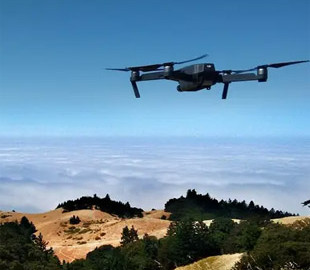
Engineers from the University of Glasgow have developed and created a drone system based on artificial intelligence that can help in the search for tourists lost in the wild – mountains, forests, deserts. Jan-Hendrik Uers, David Anderson and Douglas Thomson published an article describing their efforts.
What new drones can do
Wilderness hiking has become a popular outdoor activity over the past few decades. The rugged landscape offers a wide variety of views, and the remoteness allows travelers to take a break from the hustle and bustle of the big city. But such hikes can be dangerous, because travelers can get lost or injured. Many of them need help every year. Therefore, rescue teams use both traditional and modern methods to find those who are lost or incapacitated for some reason.
In recent years, searchers have begun to use drones more often — their higher vantage point allows them to cover a larger area faster than searching on foot. They also help detect things that searchers can't see from the ground, such as trampled bushes.
In this new study, a team from the University of Glasgow looked at whether adding artificial intelligence to drone technology could improve the search for lost tourists.
To find out, they created a model AI, using data sets that show the paths taken by lost people and later found by search teams around the world. They also added relevant data such as age, reason for travel, whether they were alone, on foot, on horseback or by other means of transport.
They noted geographic information related to both the path taken by the lost and the location where they were found, such as rivers, streams, roads, or open terrain. They then added data specific to the geography of Scotland, on whose mountains they were testing their technology. The developers then ran the model through millions of different simulations, each representing a simulated search, until it narrowed down the most likely paths a lost traveler could take. The drone was then instructed to search along those paths.
When testing their system against traditional approaches, such as using a “lawnmower” technique to find real travelers, the new approach found lost travelers more often — 19% of the time compared to 8-12% of the time.
The researchers suggest that more data will make their system even more accurate and eventually lead to a tool that can be used to saving lives.

